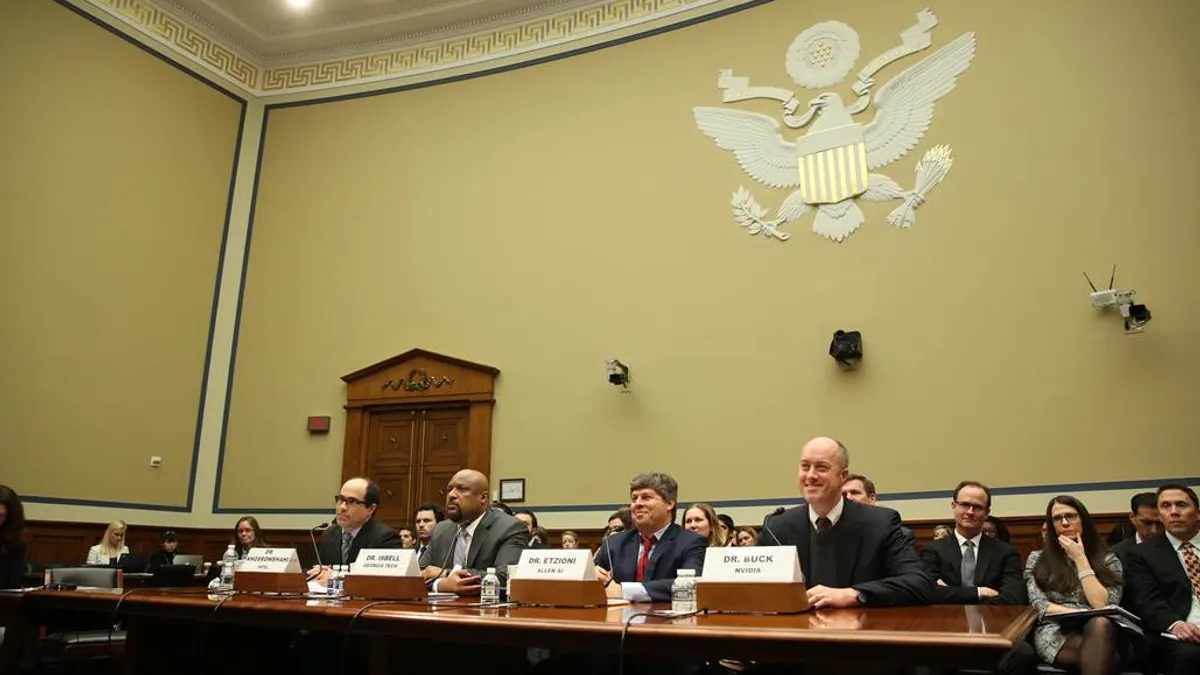The U.S. government is looking to integrate more AI capabilities across agencies.
The next iteration of the FITARA scorecards will start asking federal CIOs what they are doing to introduce AI into their agencies, according to Rep. Will Hurd, R-TX, at a House Oversight and Government Reform committee hearing Wednesday.
Artificial intelligence experts from big tech and academia recommended that the federal government promote STEM education and research funding, open data access and ensure a light regulatory touch to amplify the track of the nascent technology and facilitate its adoption at the federal level.
While AI has many applications for cybersecurity, there are also security concerns regarding the technology that need to be addressed.
Not enough focus is being devoted to thinking about how adversaries might manipulate AI systems and how, once deployed, these systems will learn and change and that process might be influenced by an outside actor, said Dr. Charles Isbell, senior associate dean at Georgia Tech's College of Computing, at the panel.
Machine learning and autonomous systems were prioritized as a budget issue for the first time in the White House's R&D memo, making the Trump administration the first to put dollars behind the technology, according to Michael Kratsios, deputy assistant to the president and deputy U.S. CTO, at a panel at the New Work Summit on Tuesday. Kratsios reiterated the need for better STEM education and a focus on regulatory hurdles.
The White House's budget allocated $84 billion to the DoD for R&D efforts, with AI as a primary focus. But throwing money at the problem doesn't always work without resources devoted to the basics.
Wednesday's hearing touched on many of the same themes brought up at a Senate hearing on AI in December, including caution against a heavy-handed regulatory approach, the problems of bias in AI systems and the need for diversity to counteract it, and the importance of STEM education and reinforcement at institutions of higher learning.
With many agencies still struggling to migrate to the cloud or switch from paper to electronic records, investments in AI could be construed as overly optimistic. But the knowledge and use cases of AI reducing mundane work and saving on operational costs are plenty, and establishing pilot cases in departments is an important first step to reaping these cost savings, said Dr. Ian Buck, VP and general manager of NVIDIA's Tesla Data Center Business, at the House panel.
The reality is many of the challenges, such as outdated infrastructure, that the federal government is facing are similar to what companies in the private sector are undergoing, and there are plenty of avenues for these organizations to modernize with advanced technologies, according to Buck, in an interview with CIO Dive.
Hiring AI talent can seem like a daunting task, but cultivating the talent from within by retraining existing workforce can ease the burden. AI is a very "accessible" technology that developers can download open source software for and learn about in the matter of weeks; they can then rent GPU hardware easily through the cloud, according to Buck.
The industry and government have spent many years collecting data, and now there is finally a tool to derive insight from it. The panel agreed that open data policies are needed so the industry can begin making use of it, but it won't be an easy process. Most of the government's data is still unstructured and needs to be organized in a meaningful way.
In early March, the House committee will reconvene for another round of AI discussion with a panel comprised of representatives — ideally from GSA, NSF, DOD and DHS — about how they are introducing AI and what support they need, said Hurd.












